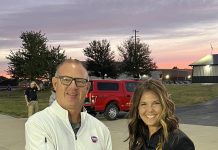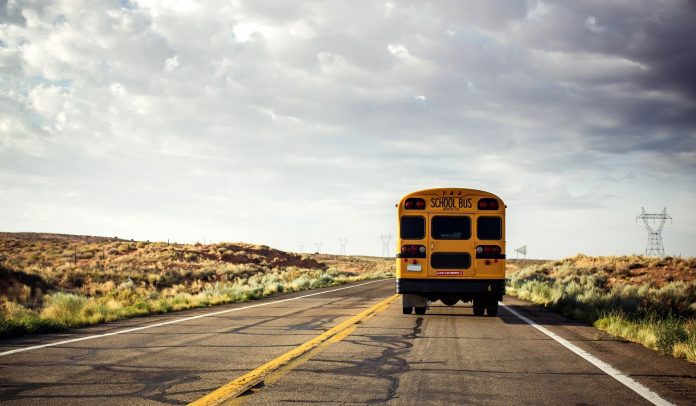Missouri students are returning to classes on foot, bicycles, as well as in cars and school buses. To prevent traffic-related injuries and fatalities to students, AAA reminds drivers to slow down and stay alert in and around school zones as well as in other areas where children might be present.
Crashes are one of the leading causes of death for school-aged children. The afternoon hours are particularly dangerous. Nearly one-third of child pedestrian fatalities occur between 3 p.m. and 7 p.m. AAA’s School’s Open – Drive Carefully! awareness campaign began in 1946 to help reduce child pedestrian fatalities and injuries. Today, this effort is more important than ever due to the prevalence of drivers with smartphones and the increase in distracted driving on our roads.
“School-aged children will soon be walking and biking to and from campuses, so drivers should prepare for them,” said AAA spokesperson Nick Chabarria. “Back to school means back to safety—let’s stay alert, be prepared, and watch out for each other.”
Pedestrian and Bicyclist Safety
In 2022, there were 1,678 vehicle crashes involving pedestrians and bicyclists which killed 129 pedestrians and 15 cyclists on Missouri roadways. For context, Missouri has seen pedestrian and bicyclist fatalities increase 89% since 2014.
Kids are particularly vulnerable because they are small and less visible to drivers, do not always make safe decisions near streets, and can easily be distracted when around other kids. Children are not adults, so it is up to drivers to compensate for these differences.
Distracted Driving
According to the National Highway Traffic Safety Administration (NHTSA), 3,308 people died in distracted-related crashes in the U.S. in 2022. That is an average of nine people killed each day in crashes that are preventable. In Missouri alone in 2022, there were 14,810 crashes due to distraction resulting in 84 deaths and 5,668 injuries. Distracted driving is especially dangerous for pedestrians and bicyclists. Non-drivers account for nearly one in five distracted driving deaths. The true numbers of deaths and injuries due to distraction are much higher though because distracted driving is often underreported or difficult to determine as the cause of a crash.
Missouri’s “Siddens Bening Hands Free Law” now prohibits drivers of all ages from holding their cell phone in their hand while behind the wheel. Hands-free use and voice-activated features are admissible under the law.
Speeding
Speed is a leading factor in crashes for teens and adults on Missouri roads. According to the latest data from Missouri State Highway Patrol, in 2022 speed was a factor in 36% crashes in our state, leading to more than 170 deaths and 2,500 serious injuries. Speeding endangers not only the life of the driver, but everyone on the road around them. Drivers should obey speed limits, and adjust speed based on road conditions, such as during bad weather.
Top AAA Back to School Safety Tips
For Drivers
- Eliminate distractions. Research shows that taking your eyes off the road for just two seconds doubles your chances of crashing.
- Slow down. Speed limits in school zones are reduced for a reason. A pedestrian struck by a vehicle traveling at 25 mph is nearly two-thirds less likely to be killed compared to a pedestrian struck by a vehicle traveling just 10 mph faster.
- Come to a complete stop. Research shows that more than one-third of drivers roll through stop signs in school zones or neighborhoods. Always come to a complete stop, checking carefully for children on sidewalks and in crosswalks before proceeding.
- Share the road with bicyclists. Children on bicycles are often inexperienced, unsteady and unpredictable. Slow down and allow at least three feet of passing distance between your vehicle and a bicyclist.
- Talk to your teen. Car crashes are one of the leading causes of death for teens in the United States, and nearly one in four fatal crashes involving teen drivers occurs during the after-school hours of 3 p.m. to 7 p.m.
For Pedestrians
- Pay attention at all times. Avoid looking down at your phone or wearing headphones, so you can detect nearby traffic.
- Use sidewalks where available. If not, walk against the direction of traffic so you can see oncoming vehicles.
- Make yourself easier to be seen by wearing reflective, bright colored clothing or vest if your school requires uniforms.
For Bicyclists
- Wear a helmet and neon or bright colored clothes or vest.
- Ride in the same direction as traffic and stay as far to the right as possible. Use bike lanes when you can.
- Do not wear headphones so you can detect approaching traffic.
- Cross the street at intersections. Do not pull into the roadway from between parked cars.
















